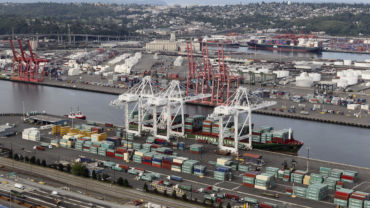A new study from KPMG and the University of New South Wales (UNSW) in Sydney assesses the difficulty companies face in complying with Value Added Tax (VAT) and Goods and Services Tax (GST) requirements in 47 countries
Researchers examined 27 “burden indicators” across four areas: tax policy complexity, number and frequency of administrative requirements, taxing authorities’ support services, and the monetary costs of compliance.
Countries were rated on a scale of 1 to 10, with the lower the score indicating a lesser compliance burden:
-
-
-
Least burdensome, with score of 2 — Singapore.
-
3 — Australia, Costa Rica, New Zealand & South Africa.
-
4 — Canada, Denmark, Estonia, Ireland, Japan, Lithuania, Norway, Russia & Sweden.
-
5 — Austria, Chile, China, Czech Republic, Finland, Germany, Iceland, India, Indonesia, Israel, Korea, Latvia, Netherlands, Peru, Portugal, Slovenia, Switzerland & the United Kingdom.
-
6 — Argentina, Colombia, France, Greece, Hungary, Italy, Kenya, Mexico, Poland, Slovakia & Spain.
-
7 — Belgium, Brazil, Luxembourg & Turkey.
-
-
The compliance burden documented in the study reverberates across a company’s operations, said Karen Witton, a KPMG partner in the United Kingdom. “The ability to comply will be affected by business data, processes, and controls as well as the tax department,” she said. “Most businesses are struggling to keep abreast of the increasing demands placed upon them, and many new demands from tax authorities are implemented in a relatively short space of time.
“Add to that the new approach of many tax authorities moving towards real-time reporting and increasing controls that are directly related to the raw data of the business — rather than post-reviewed data — and all of this must be undertaken on a global basis and read across to all taxes,” Witton said. “Put simply, the tax department needs to be an integral part of the business.”
Reducing compliance burdens
The diagnostic tool UNSW created for the study identifies countries that can reduce companies’ compliance burden through policy or administrative reforms — as well as countries whose tax regimes can serve as models to be replicated.
Among the 15 countries found to have the highest VAT compliance burden, the majority rated above the midpoint for tax policy complexity and for the number and frequency of administrative obligations — factors the study suggests can be addressed by simplifying policies and reporting requirements. Among these countries, however, the study found a wide range of “institutional posture and attitude” regarding regulatory reform:
Seven countries have acknowledged VAT compliance as a problem and crafted plans to reduce it: Belgium, Brazil, Colombia, Hungary, Italy, Kenya, and Mexico. There are signs that four countries — France, Luxembourg, Spain, and Turkey — recognize the problem, “but more concerted action by governments appears warranted.” There are no indications that the remaining four countries — Argentina, Greece, Poland, and Slovakia — acknowledge the issue or plan to address it.
“The findings highlight the importance not only of countries having the right VAT policies in place, but also the call to modernize the delivery of tax administration to support businesses in efficiently managing VAT compliance costs,” said Lachlan Wolfers, global head of indirect taxes at KPMG International. “Businesses are telling us that, as their compliance obligations are globalizing through the digitalization of business models, the ability to deal with tax authorities electronically in registering, invoicing, and filing is becoming increasingly important.”
The study suggests that companies’ compliance burden is greater in less-developed countries and in countries with older VAT regimes as well as those with higher levels of exporting or taxation as percentage of GDP.
Regulatory demands likely to grow
Witton expects VAT/GST regulatory demands to grow and technology to play an increasingly important role in tax administration. “I think that, generally, all countries will see an increased compliance burden as these taxes continue to grow in importance and breadth,” she explained. “Hence, this landscape will change and the countries with a lower compliance burden will be those with a more sophisticated, automated approach.”
The research team at UNSW hopes government tax authorities will use its diagnostic tool to identify best practices and explore policy, regulatory, and operational variances between countries in order to improve compliance and reduce costs.
They note that the U.K.’s Making Tax Digital initiative, Singapore’s Assisted Compliance Assurance Programme, and electronic invoicing, filing, and registration systems “support taxpayers in efficiently managing VAT compliance costs, while at the same time enhancing the integrity of countries’ tax systems. In addition, the diagnostic tool can be used to highlight the importance of best practice VAT (policies) to assist in managing compliance costs, with countries like China and India both recently recognizing the value in having fewer VAT rates which operate off a broad base.”
While the diagnostic tool has been used to address VAT compliance burdens, it can be expanded to assess other business taxes as well. UNSW Adjunct Professor Richard Highfield, one of the study’s authors, said: “The UNSW team considers that, at this stage, it has sufficient proof of concept to be able to undertake, in collaboration with stakeholders, the development of a broader suite of diagnostic tools designed to measure and evaluate the tax compliance burden of other business taxes, in particular, the corporate income tax, tax regimes applicable to the provision of labor, and customs duties and excises.”
KPMG’s Wolfers noted that it “will be fascinating to see the results of this diagnostic tool in a few years’ time as different technology initiatives play an increased role in both VAT collection and enforcement — measures such as real-time tax reporting, the increased use of data and analytics in managing compliance, and the deployment of blockchain technology.”




